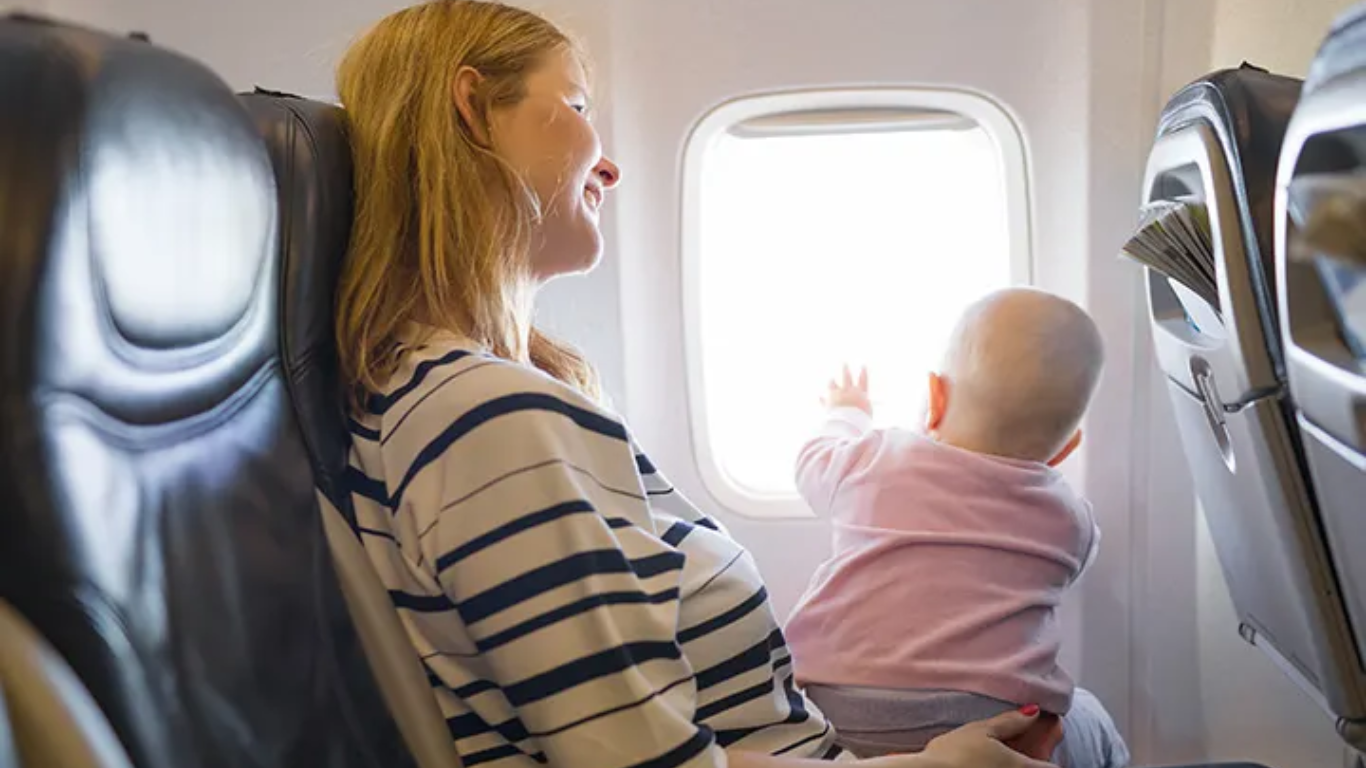Traveling with kids can be an incredibly rewarding experience, but it can also present unique challenges. From dealing with tantrums in airport terminals to navigating long car rides to finding family-friendly accommodations, there’s a lot to consider when embarking on a trip with young children in tow. Whether you’re taking a road trip, flying to a far-flung destination, or taking a relaxing beach vacation, the key to a successful family trip is proper planning, patience, and the right attitude.
In this article, we’ll give you some practical tips and strategies to help make your family trip smoother, more enjoyable, and less stressful.
Plan ahead, but stay flexible
Traveling with kids requires a certain amount of planning, but flexibility is just as important. Kids are unpredictable, and things don’t always go according to plan. That said, it’s important to prepare as much as possible to minimize stress.
Create a packing list:
First, create a packing list tailored to your children’s needs. Pack clothes for all weather conditions, as well as essentials like diapers, snacks, medications, and favorite toys or comfort items (like a stuffed animal or blanket). If you’re flying, make sure you have anything you might need during the flight in your carry-on (e.g., extra diapers, wipes, headphones, games).
Research kid-friendly activities:
Before you leave, research the destination to find out what activities and attractions are kid-friendly. Many cities and regions have family-friendly museums, parks, and outdoor adventures, but knowing where to go ahead of time can save you a lot of frustration. If you’re taking a road trip, plan frequent stops so your kids can burn off some energy.
Consider nap times and sleep schedules:
If you’re traveling to a new time zone or environment, be mindful of your kids’ nap times and sleep schedules. Gradually adjusting to the new time zone before you arrive can help reduce jet lag, and knowing when and where your kids can rest can help you avoid meltdowns from exhaustion.
Pack smart: Keep essentials close at hand
When traveling with kids, it’s important to have all your essentials close at hand. The less often you have to dig through a large suitcase or carry-on, the better.
Put together a travel bag with essentials:
Consider packing a small bag that can hold all your travel essentials: snacks, drinks, a few toys or books, and hygiene products like hand sanitizer or wipes. If you’re flying, make sure your essentials bag is small enough to fit under the seat in front of you and be easily accessible.
Snacks and drinks:
Kids can get fussy when they’re hungry, so pack a selection of snacks they like. Opt for healthy snacks like fruit slices, crackers, nuts, and granola bars. For drinks, bring water or juice cartons (according to the airline’s liquid regulations). Having these snacks and drinks on hand will make long waits or delays much more manageable.
Entertainment for children:
Long journeys can quickly become boring for children. Make sure you bring a variety of entertainment options – this can include coloring books, portable gaming devices, tablets with pre-loaded games or movies, puzzles, and music playlists. For younger children, interactive toys that can keep them occupied for longer periods are a good choice.
A first-aid kit:
Always travel with a small first aid kit, especially if you are traveling to a remote location or abroad. Pack bandages, antiseptic wipes, painkillers, insect repellent, and any prescription medications your child may need
Traveling by Air: Tips for a Smooth Flight
Flying with children can be one of the more difficult aspects of a family trip, but with a little preparation, it doesn’t have to be stressful. Here are some tips to make your air travel as smooth as possible:
Choose the right flight times:
When booking flights, try to choose times that coincide with your children’s sleep schedules. If possible, schedule flights that coincide with nap or bedtime so your child can sleep through part of the trip. Morning flights are often less stressful and many parents prefer them to evening flights that can coincide with the bedtime of fussy children.
Arrive early:
Arriving at the airport early gives you time to check in, go through security, and deal with any unexpected problems. This is especially important if you are traveling with very young children, as you will need to allow extra time for diaper changes, bathroom breaks, and possible feedings.
Bring extra clothes:
Flights can be unpredictable and accidents or spills can happen. Pack extra clothes for your child (and yourself, just in case). It’s always a good idea to have a change of clothes on hand, especially on long flights or layovers.
Use a stroller or baby carrier:
For young children, a stroller is a lifesaver in airports. At many airports, the paths between gates are long, and a stroller can be a convenient way for your child to rest while you’re on the move. If you’re traveling with a baby, a baby carrier can also be a practical and comfortable way to get through the airport.
Road Trips: Make the Trip Enjoyable
A road trip with kids offers more flexibility but requires careful planning, especially when it comes to keeping your kids entertained during the long hours in the car.
Break the trip into manageable chunks:
Long car rides can be exhausting for kids, so break the trip up by scheduling regular stops. Look for scenic spots, parks, or fun attractions where you can take a break, stretch your legs, and let the kids burn off some energy. This will keep the trip from feeling like an endless slog and will give your kids something to look forward to along the way.
Create a Car Ride Playlist:
A good car ride playlist can make the trip more fun. Involve your kids in choosing their favorite songs and include some classic travel songs that the whole family will enjoy. Sing-alongs can be a great way to pass the time and lighten the mood.
Car Games and Activities:
Car rides are perfect opportunities to play car ride games like “I See Something You Don’t See” or “20 Questions.” Consider packing small toys, coloring books, and other portable entertainment to keep the kids occupied for hours.
Prepare for motion sickness:
If your child is prone to motion sickness, bring appropriate medication and make sure they sit in a spot where there is less movement (usually in the front of the vehicle or near a window). Frequent stops for fresh air and snacks can also help minimize symptoms.
Family-Friendly Accommodations
Choosing the right accommodation is crucial when traveling with children. Opt for accommodations that are geared toward families and offer the amenities you need for a comfortable stay.
Look for family-friendly hotels or resorts:
Many hotels and resorts offer amenities designed specifically for families, such as kid-friendly pools, kids’ clubs, and family suites. Read reviews and amenities before booking to make sure the property is truly kid-friendly.
Consider vacation rentals:
Vacation rentals (e.g. Airbnb, Vrbo) can offer families more flexibility and space. They often have access to a kitchen, which can save you money and help you prepare meals for picky eaters. A vacation rental also offers the convenience of separate sleeping areas, so kids have their own space to relax.
Safety First:
No matter where you stay, make sure the property is child-proof. Look for things like sharp corners on furniture, pool fences, or the availability of cribs. Many hotels also offer baby-proofing kits upon request.
Keep a positive and patient attitude
The most important tip for traveling with kids is to keep a positive and patient attitude. Things may not always go as planned, but keeping your sense of humor and being flexible will go a long way in making the trip enjoyable for everyone. Here are some ways to keep things light:
Have realistic expectations:
Don’t expect everything to be perfect. Kids might throw tantrums, you might lose your luggage, or get stuck in traffic. How you react is what matters. Instead of stressing, try to go with the flow and make the best of the situation.
Involve the kids in the planning:
If possible, involve your kids in the planning process. Let them choose some activities or destinations that excite them. When kids feel included in the decision-making process, they are more likely to be engaged and cooperative during the trip.
Conclusion
Traveling with kids takes a little more effort and organization, but with the right preparation, it can be a wonderfully rewarding experience for the whole family. By planning ahead, packing smart, making the trip fun, and choosing kid-friendly accommodations, you can ensure that your family vacation is not only stress-free but filled with lasting memories. So buckle up, enjoy the ride, and get ready for the adventure of a lifetime more info…
